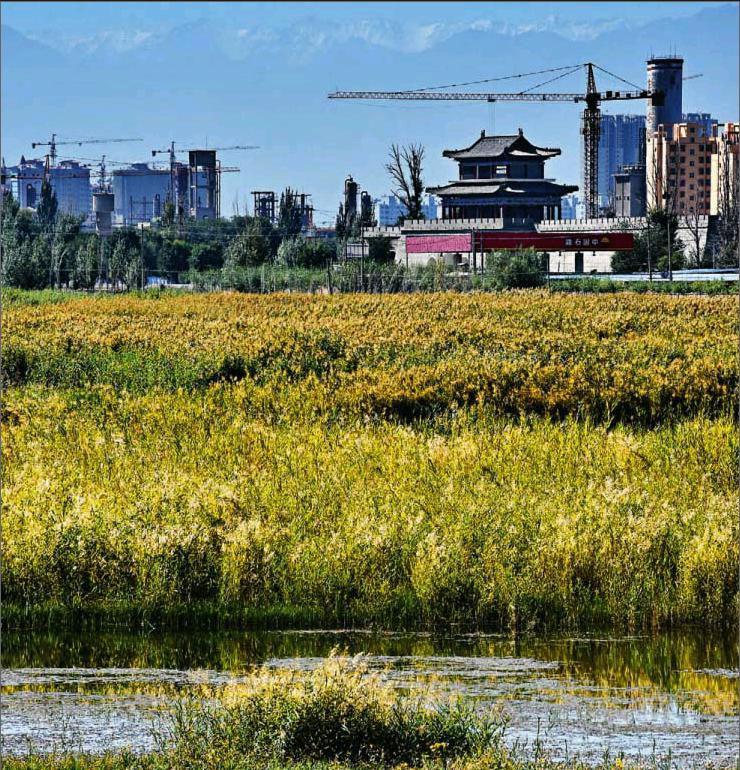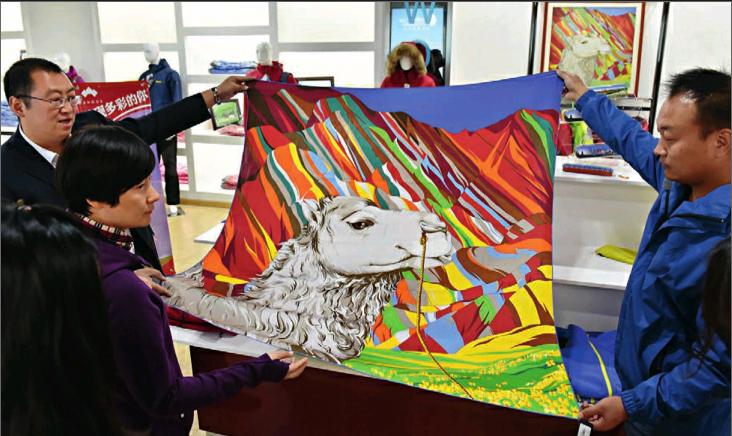Preserve Multiculture and Pursue Green Development
2016-01-19BystaffreporterJIAOFENG
By+staff+reporter+JIAO+FENG



ZHANGYE, known as Ganzhou in ancient times and reputed as“Golden Zhangye” today, is located in northwest Chinas Gansu Province. It is the largest oasis in the middle section of the Hexi Corridor and was once the sole path to the ancient Silk Road. Over two millennia, monks, travelers, and merchants of various ethnicities from East and West converged here. The city was thus instrumental in promoting Eastern and Western cultural exchanges and integrating different ethnic groups. Today, Zhangye is home to 38 ethnic groups– more than half of the total in China. People of various religions and belief systems coexist harmoniously here amid suitably diverse styles of architecture, so forming a unique environment of commingling multiculture.
Under the auspices of the Chinese governments Belt and Road Initiative, the Zhangye municipal government plans to make the city an ecological safe shelter zone, a regional transportation hub, a green and organic agricultural products base, and an international tourist destination along the Silk Road. Huang Zeyuan, mayor of Zhangye City, intends to ensure that Zhangye makes full use of its geographical advantages and multi-cultural environment by adopting an inclusive attitude to better development in a new historical era. Huang, who majored in history, has extensive knowledge of the citys past. He gave the China Today reporter an introduction to Zhangyes long history and rich culture, and also expounded on its current opportunities and plans for the future.
Regional Transportation Hub
“The Silk Road is a trade route welltrodden by pioneers between East and West. Through various businesses conducted along it, the road evolved into a medium for cultural transmission and the fusion of different ethnic groups. Zhangye was at the intersection of the northern, central and southern routes of the ancient Silk Road,” Huang Zeyuan said, clearly and justifiably gratified at Zhangyes geographical location.
“Zhangye has the Qilian Mountains to its south, and acts as border between the Qinghai-Tibet Plateau and the Loess Plateau. Four oases have formed out of the runoff from the Qilian Mountains. Their headwaters are all located in Zhangye. The Heihe (Black River), Chinas second longest inland river, runs through and nourishes Zhangye, keeping it fertile. Natures bounty has resulted in abundant production and thriving businesses in Zhangye. From the Han (207 BC - AD 220) to the Tang Dynasty (618-907), Zhangye was the largest trading center second only to the ancient capital of Changan, todays Xian. It was also a key stop along the Silk Road for merchants to trade and replenish their wares. During the Yuan Dynasty (1271-1368), Zhangye was designated the capital city of Gansu Province, and construction site of the countrys biggest granary for army rations. By the Ming (1368-1644) and Qing (1644-1911) dynasties, scores of guild halls that had been established in Ganzhou served merchants from all regions. Zhangyes business culture was hence a key component of the culture of the Silk Road,” Huang said.endprint
As a main stop for replenishing supplies along the Silk Road, Zhangye accommodated officials, envoys, businessmen, and eminent monks such as Faxian (334-420) during the Eastern Jin Dynasty (317-420), and Xuanzang (602-664) – main character in Wu Chengens classic novel Journey to the West – during the Tang Dynasty.
“In 1275, when he was just 19 years old, the Venetian merchant traveller Marco Polo visited Zhangye. The Chronicle of Events in Zhangye records that in the summer of 1274, Marco Polo accompanied his uncle to the court of Kublai Khan, Emperor Shizu of Yuan, somewhere near todays Xilin Gol Grassland in Inner Mongolia Autonomous Region, where he reported on the completion of a task. As the route was impassable, he stayed in Ganzhou for almost a year. Marco Polo Street – a European style thoroughfare built in 2003 – now stands in Zhangye. Walking along it, visitors can get a sense of the history and culture of the city, and appreciate its openness and prosperity in former times,” Huang said.
When talking about todays Silk Road Economic Belt, Huang explained that in addition to its function of cultural transmission, the belt is also an important medium for economic transactions. Zhangye is a key location along it. “Underground is a pipeline for transporting natural gas from west to east. We also have an oil pipeline. Above ground we have a railway and a highway to transport coal to the east, and overhead is an extra-high voltage cable to transfer electricity in the same direction. Zhangye also serves as a pathway for tourists traveling between the west and the east. Moreover, thanks to good natural conditions, Zhangye is an ideal location for organic farming. Its organic products are exported to regions in Central Asia and Europe, and are also in popular demand among local customers,” Huang said.
Commingled Cultures
Zhangye has a long history and rich culture. “As early as 111 BC, Zhangye was established as a prefecture under the jurisdiction of the central government. A nexus of religious integration among various eastern and western cultures, Zhangye has earned its reputation as a famous historical and cultural city in China,” Huang said.
Zhangye was originally composed of settlements inhabited by ethnic minorities. In earlier times it was the sole route from the Western Regions to the Central Plains, and consequently a strategic location. In the past, several ethnic groups, including the Rouzhi ethnic group, the Xiongnu (Huns), the nomadic Rouran, various Turkic peoples, the Tangut and Tubo peoples, and the Mongols, settled in Zhangye. Among them the Xiongnu, Tangut and Mongols either established their own regimes or exercised effective jurisdiction. Today, people from 38 ethnic groups live in Zhangye, among them the Yugur, who live exclusively in China.endprint
